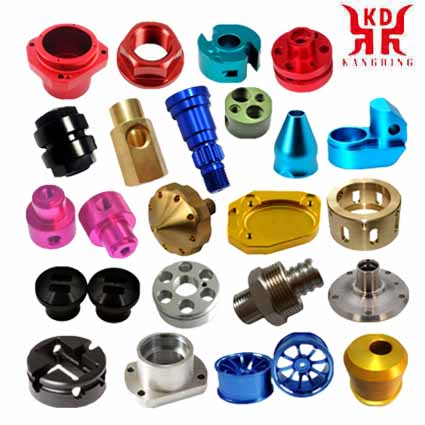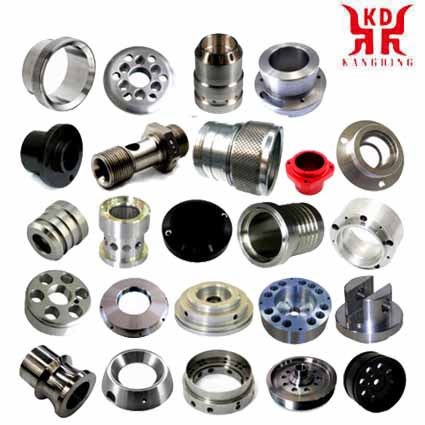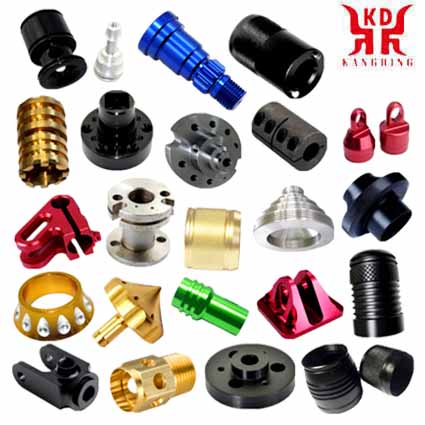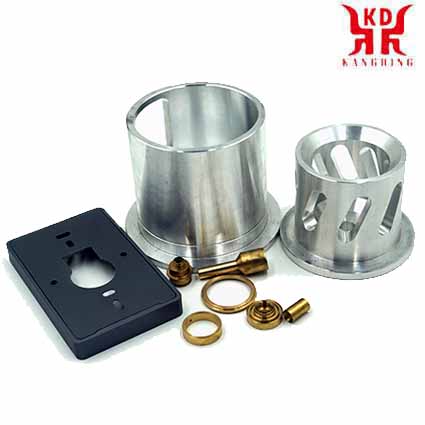What is Machining?
Refers to the method of machining using machinery (lathe, milling machine, boring machine, grinder). According to drawings or samples, the whole process of making the blank into qualified parts according to its shape, size and nature. According to the difference in processing methods, it can be divided into cutting processing and pressure processing. Processing technology is the work that engineers need to do before processing, to avoid processing errors during processing and cause economic losses.

The machining process is to change the shape, size, relative position and nature of the production object on the basis of the process to make it a finished or semi-finished process. It is a detailed description of each step and each process. For example, as mentioned above, rough machining may include (turning, milling) manufacturing, grinding and so on. Finishing may be divided into fine turning and milling, polishing, surface treatment, etc., each step must have detailed data. For example, how much roughness should be achieved, and how much tolerance should be achieved.
Machining In the production process, the process of changing the shape, size, position and nature of the production object to make it a finished or semi-finished product is called a process. It is the main part of the production process. The technological process can be divided into casting, forging, stamping, welding, machining, assembly and other technological processes. The mechanical manufacturing process generally refers to the sum of the mechanical processing process of the parts and the assembly process of the machine. Other processes are called auxiliary processes, such as transportation, storage, power supply, equipment maintenance, etc. The technological process is composed of one or several sequential processes, and a process consists of several steps.
The process is the basic unit of the machining process. The so-called process refers to the part of the process that is continuously completed by a worker (or a group of) workers on a machine tool (or a work site) for the same workpiece (or for several workpieces at the same time). The main feature of forming a process is that the processing objects, equipment and operators are not changed, and the content of the process is completed continuously.
The process steps are under the condition that the surface of the machined product is unchanged, the processing tool is unchanged, and the cutting amount is unchanged.
The machining path is also called the work stroke, which is the step that the machining tool completes once on the machining surface.
To formulate the machining process, it is necessary to determine how many processes the workpiece will go through and the sequence of processes. A brief process that only lists the names of the main processes and their processing sequence is called a process route.
The formulation of the process route is to formulate the overall layout of the process. The main task is to select the processing method of each surface, determine the processing sequence of each surface, and the number of processes in the entire process. The drafting of the process route must follow certain principles.

1. Single machined prototype: A single prototype produces products of different structures and different sizes, and is rarely repeated.
2. Mass production: The same products are manufactured in batches a year, and the machining process has a certain degree of repetition.
3. Mass manufacturing: The number of products manufactured is large, and machining is often repeated processing of a certain process of a certain part.
(1) The designed process specification should be able to guarantee the processing quality of the machine parts (the assembly quality of the parts) and meet the various technical requirements specified on the design drawings.
(2) The technological process should have a higher productivity, so that the product can be put on the market as soon as possible.
(3) Try to reduce manufacturing costs
(4) Pay attention to reducing the labor intensity of workers and ensure production safety.
Original information:
(1) Product assembly drawings and parts drawings.
(2) Product acceptance quality standards.
(3) The annual production program of the product.
(5) The production conditions of the machining factory:
Including the specifications, performance and current status of machine tools and process equipment, the technical level of workers, the ability of the factory to make process equipment, and the power supply capacity of the factory.
(6) Design manuals and related standards required for process specification design and process equipment design.
(7) Advanced machining technology at home and abroad, etc.

(2) Determine the blank.
(3) Draw up the process route and select the positioning base surface.
(4) Determine the equipment used in each process.
(5) Determine the cutting tools, fixtures, measuring tools and auxiliary tools used in each process.
(6) Determine the technical requirements and inspection methods of each main process.
(7) Determine the machining allowance of each process and calculate the size and tolerance of the process.
(8) Determine the cutting amount.
(9) Determine the working hour quota for machining.
Classification
Design datum: The datum used to determine the position of other points, lines and surfaces on the part drawing is called the design datum.
Process benchmark: the benchmark used in the process of processing and assembly of parts, called process benchmark. Process benchmarks are divided into assembly benchmarks, measurement benchmarks and positioning benchmarks according to different uses.
(1) Assembly datum: The datum used to determine the position of the part in the component or product during assembly is called the assembly datum.
(2) Measurement datum: the datum used to check the size and position of the processed surface, called the measurement datum.

2. Sheet metal, box body, metal structure;
3. Mechanical processing of titanium alloys, high-temperature alloys, non-metals, etc.;
4. Design and manufacture of wind tunnel combustion chamber;
5. Design and manufacture of non-standard equipment.
6. Mold design and manufacturing.
Such as micro-machining technology, rapid prototyping technology, precision ultra-precision processing technology, etc.
Micro machining technology
With the development of micro/nano science and technology, micromachines, which are characterized by their own small shape and size or extremely small operating scale, have become a high-tech technology for people to understand and transform the microscopic world. Micro-machines have the characteristics of being able to work in a small space without disturbing the working environment and objects. It has broad application potential in aerospace, precision instruments, biomedicine and other fields, and has become an important means of nanotechnology research. Therefore, it is highly valued and listed as the first of the key technologies in the 21st century.
Rapid Prototyping Machining Technology
Rapid prototyping technology was developed in the 20th century, and samples or parts can be quickly manufactured based on CAD models. It is a material accumulation processing manufacturing method, that is, three-dimensional forming is completed through the orderly accumulation of materials. Rapid prototyping technology integrates modern scientific and technological achievements such as CNC technology, material technology, laser technology and CAD technology, and is an important part of modern advanced machining technology.
Precision ultra-precision machining technology
Precision and ultra-precision machining is an important part of modern machining and manufacturing technology, and it is one of the important indicators to measure the level of a country's high-tech manufacturing industry. With the development of computer and information technology, higher requirements are put forward on manufacturing technology. Not only is it required to obtain extremely high size, shape and position accuracy, but also extremely high surface quality. It is precisely under this market demand that ultra-precision processing technology has been rapidly developed, and various processes and new methods have been emerging.

Machining production process
The machining process refers to the entire process of making parts from raw materials (or semi-finished products). For machine processing, it includes the transportation and storage of raw materials, production preparation, blank manufacturing, parts processing and heat treatment, product assembly, and debugging, surface treatment and packaging. The content of the machining process is very extensive. Modern enterprises use the principles and methods of systems engineering to organize and guide production, and regard the production process as a production system with inputs and outputs.The machining process is to change the shape, size, relative position and nature of the production object on the basis of the process to make it a finished or semi-finished process. It is a detailed description of each step and each process. For example, as mentioned above, rough machining may include (turning, milling) manufacturing, grinding and so on. Finishing may be divided into fine turning and milling, polishing, surface treatment, etc., each step must have detailed data. For example, how much roughness should be achieved, and how much tolerance should be achieved.
Machining In the production process, the process of changing the shape, size, position and nature of the production object to make it a finished or semi-finished product is called a process. It is the main part of the production process. The technological process can be divided into casting, forging, stamping, welding, machining, assembly and other technological processes. The mechanical manufacturing process generally refers to the sum of the mechanical processing process of the parts and the assembly process of the machine. Other processes are called auxiliary processes, such as transportation, storage, power supply, equipment maintenance, etc. The technological process is composed of one or several sequential processes, and a process consists of several steps.
The process is the basic unit of the machining process. The so-called process refers to the part of the process that is continuously completed by a worker (or a group of) workers on a machine tool (or a work site) for the same workpiece (or for several workpieces at the same time). The main feature of forming a process is that the processing objects, equipment and operators are not changed, and the content of the process is completed continuously.
The process steps are under the condition that the surface of the machined product is unchanged, the processing tool is unchanged, and the cutting amount is unchanged.
The machining path is also called the work stroke, which is the step that the machining tool completes once on the machining surface.
To formulate the machining process, it is necessary to determine how many processes the workpiece will go through and the sequence of processes. A brief process that only lists the names of the main processes and their processing sequence is called a process route.
The formulation of the process route is to formulate the overall layout of the process. The main task is to select the processing method of each surface, determine the processing sequence of each surface, and the number of processes in the entire process. The drafting of the process route must follow certain principles.

Type of machining
Production types are usually divided into three categories:1. Single machined prototype: A single prototype produces products of different structures and different sizes, and is rarely repeated.
2. Mass production: The same products are manufactured in batches a year, and the machining process has a certain degree of repetition.
3. Mass manufacturing: The number of products manufactured is large, and machining is often repeated processing of a certain process of a certain part.
Machining process design
Design Principles:(1) The designed process specification should be able to guarantee the processing quality of the machine parts (the assembly quality of the parts) and meet the various technical requirements specified on the design drawings.
(2) The technological process should have a higher productivity, so that the product can be put on the market as soon as possible.
(3) Try to reduce manufacturing costs
(4) Pay attention to reducing the labor intensity of workers and ensure production safety.
Original information:
(1) Product assembly drawings and parts drawings.
(2) Product acceptance quality standards.
(3) The annual production program of the product.
(5) The production conditions of the machining factory:
Including the specifications, performance and current status of machine tools and process equipment, the technical level of workers, the ability of the factory to make process equipment, and the power supply capacity of the factory.
(6) Design manuals and related standards required for process specification design and process equipment design.
(7) Advanced machining technology at home and abroad, etc.

Step content of machining:
(1) Analyze and research product assembly drawings and parts drawings.(2) Determine the blank.
(3) Draw up the process route and select the positioning base surface.
(4) Determine the equipment used in each process.
(5) Determine the cutting tools, fixtures, measuring tools and auxiliary tools used in each process.
(6) Determine the technical requirements and inspection methods of each main process.
(7) Determine the machining allowance of each process and calculate the size and tolerance of the process.
(8) Determine the cutting amount.
(9) Determine the working hour quota for machining.
Machining benchmark
Mechanical parts are composed of several surfaces. To study the relative relationship of the surface of the parts, a benchmark must be determined. Datum is the point, line, and surface on which the position of other points, lines, and surfaces are determined on the part. According to the different functions of benchmarks, benchmarks can be divided into design benchmarks and process benchmarks.Classification
Design datum: The datum used to determine the position of other points, lines and surfaces on the part drawing is called the design datum.
Process benchmark: the benchmark used in the process of processing and assembly of parts, called process benchmark. Process benchmarks are divided into assembly benchmarks, measurement benchmarks and positioning benchmarks according to different uses.
(1) Assembly datum: The datum used to determine the position of the part in the component or product during assembly is called the assembly datum.
(2) Measurement datum: the datum used to check the size and position of the processed surface, called the measurement datum.
Machining allowance
In the process of turning from a blank to a finished product, the total thickness of the metal layer cut off on the surface of the workpiece is called the total machining allowance of the surface. The thickness of the metal layer removed in each process is called the machining allowance between processes. For rotating surfaces such as outer circles and holes, the machining allowance is considered from the diameter, so it is called symmetric allowance (ie, bilateral allowance). That is, the thickness of the metal layer actually removed is half of the machining allowance on the diameter. The machining allowance of the plane is the unilateral allowance, which is equal to the thickness of the metal layer actually removed. The purpose of leaving a machining allowance on the workpiece is to remove the machining errors and surface defects left by the previous process: Such as the chilled layer, pores, sand layer on the surface of the casting, the oxide scale, decarburized layer, surface cracks on the surface of the forging, the internal stress layer and surface roughness after cutting. Thereby improving the accuracy and surface roughness of the workpiece. The size of the machining allowance has a great influence on the processing quality and production efficiency. The machining margin is too large, which not only increases the labor of machining, reduces the productivity, but also increases the consumption of materials, tools and power, and increases the processing cost. If the machining allowance is too small, the defects of the previous process cannot be eliminated, and the clamping error during the processing of this process cannot be compensated, resulting in waste products. The selection principle is to make the margin as small as possible under the premise of ensuring quality. Generally speaking, the higher the finishing, the smaller the process margin.
The scope of application of machining
1. Processing of various metal parts;2. Sheet metal, box body, metal structure;
3. Mechanical processing of titanium alloys, high-temperature alloys, non-metals, etc.;
4. Design and manufacture of wind tunnel combustion chamber;
5. Design and manufacture of non-standard equipment.
6. Mold design and manufacturing.
The development status of machining
With the rapid development of modern machining and machining technology, many advanced machining technology methods have slowly emerged:Such as micro-machining technology, rapid prototyping technology, precision ultra-precision processing technology, etc.
Micro machining technology
With the development of micro/nano science and technology, micromachines, which are characterized by their own small shape and size or extremely small operating scale, have become a high-tech technology for people to understand and transform the microscopic world. Micro-machines have the characteristics of being able to work in a small space without disturbing the working environment and objects. It has broad application potential in aerospace, precision instruments, biomedicine and other fields, and has become an important means of nanotechnology research. Therefore, it is highly valued and listed as the first of the key technologies in the 21st century.
Rapid Prototyping Machining Technology
Rapid prototyping technology was developed in the 20th century, and samples or parts can be quickly manufactured based on CAD models. It is a material accumulation processing manufacturing method, that is, three-dimensional forming is completed through the orderly accumulation of materials. Rapid prototyping technology integrates modern scientific and technological achievements such as CNC technology, material technology, laser technology and CAD technology, and is an important part of modern advanced machining technology.
Precision ultra-precision machining technology
Precision and ultra-precision machining is an important part of modern machining and manufacturing technology, and it is one of the important indicators to measure the level of a country's high-tech manufacturing industry. With the development of computer and information technology, higher requirements are put forward on manufacturing technology. Not only is it required to obtain extremely high size, shape and position accuracy, but also extremely high surface quality. It is precisely under this market demand that ultra-precision processing technology has been rapidly developed, and various processes and new methods have been emerging.





